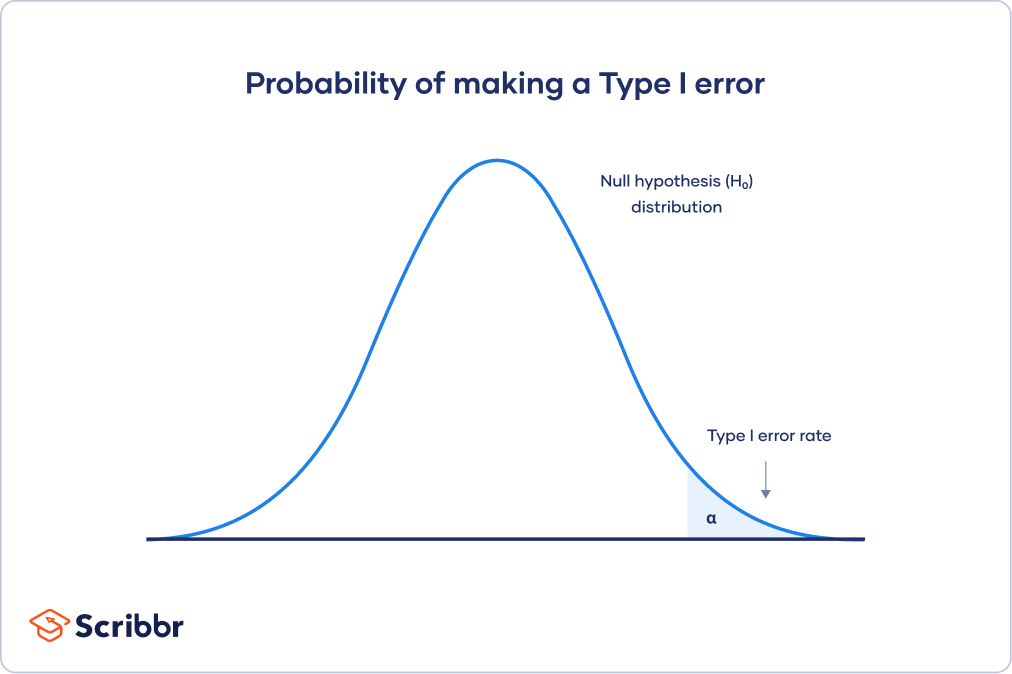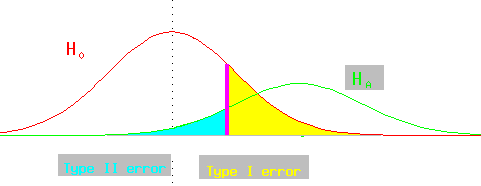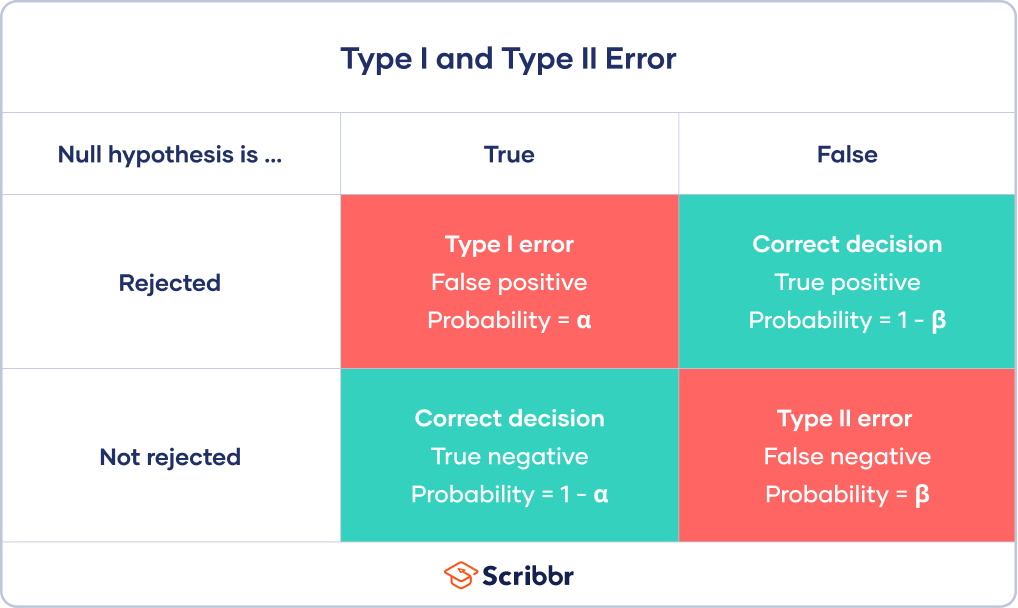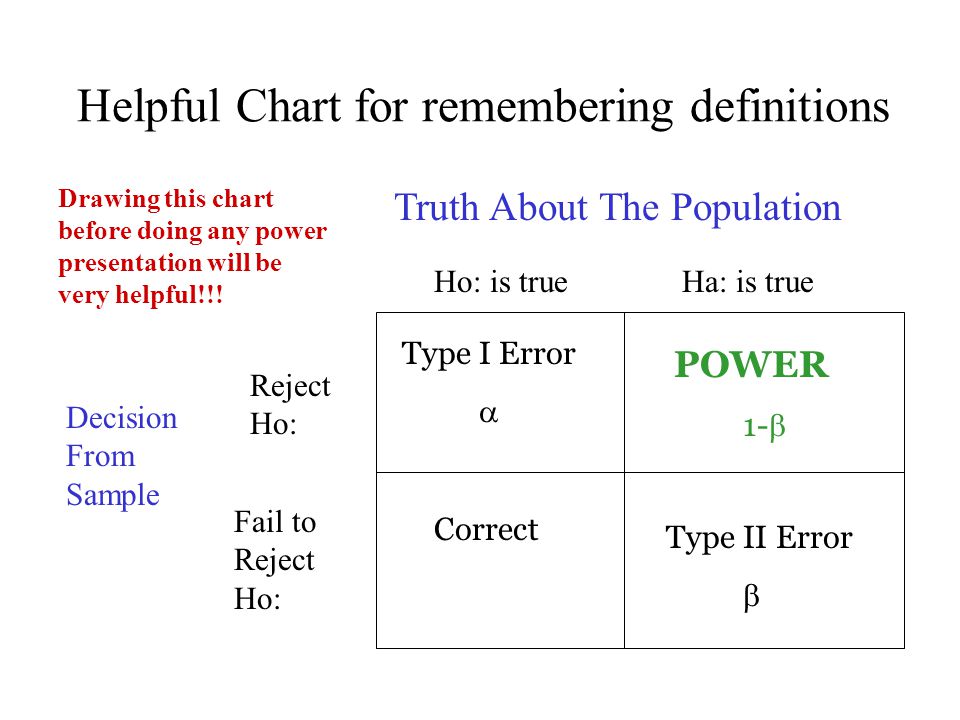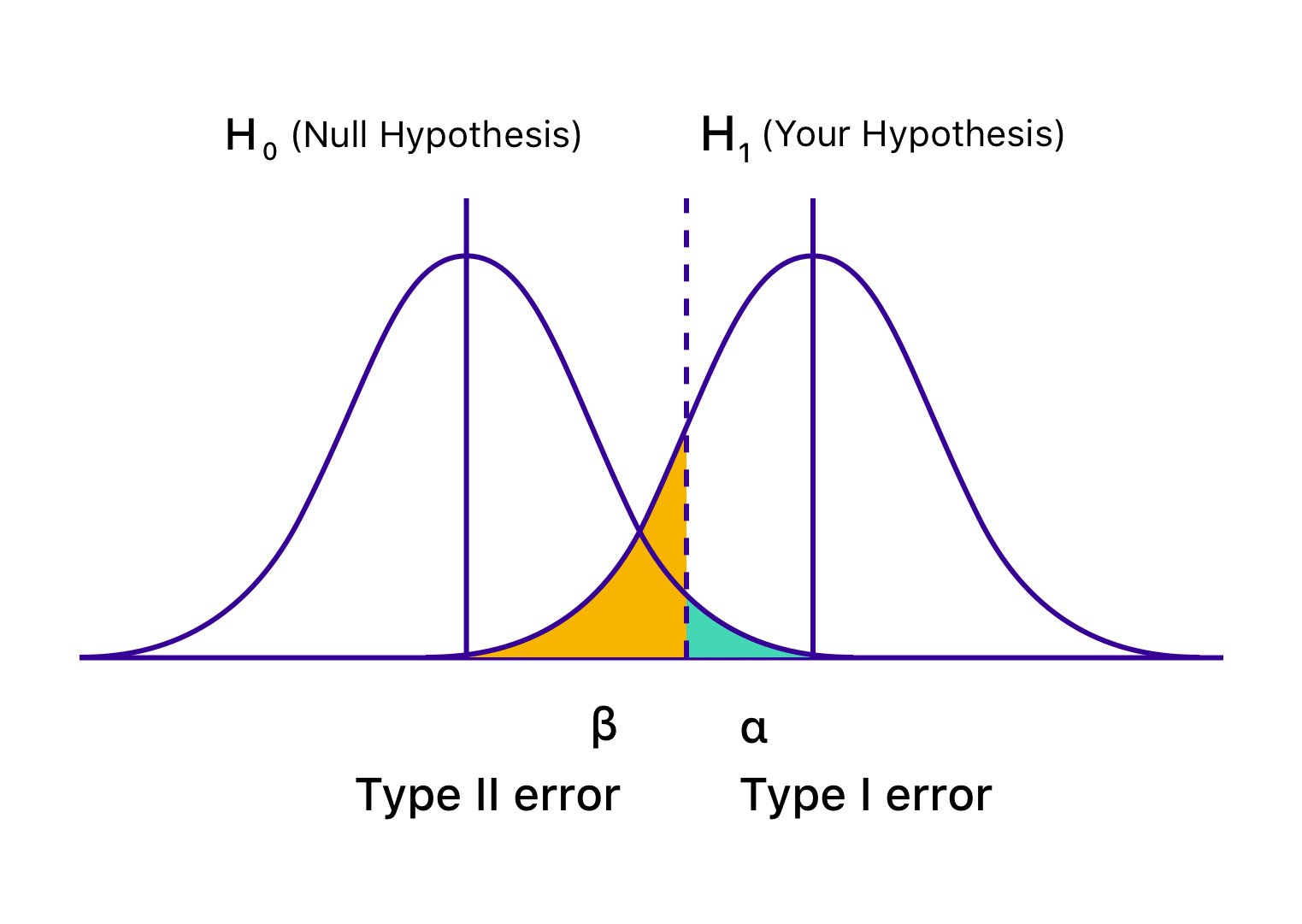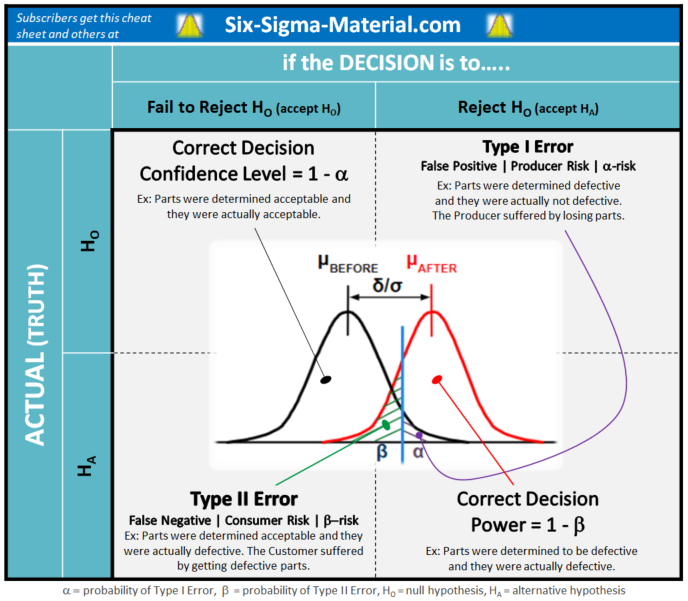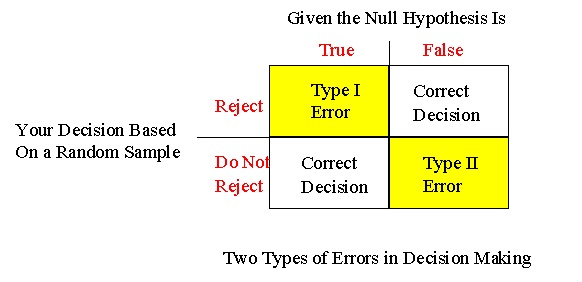Type 1 Error Chart
Qualitative data that can be counted for recording and analysis.
Type 1 error chart. What are Type I and Type II Errors. At the heart of Type I error is that we dont want to make an unwarranted hypothesis so we exercise a lot of care by minimizing the chance of its occurrence. 3 sigma control limits.
A process may be out of control if an observation measurement of the output from a process plots outside the control limits of a process control chart. The sample in the study might have been one of the small percentage of samples giving an unusually extreme test statistic. This kind of error is called a type I error false positive and is sometimes called an error of the first kind.
Number of defects number of errors in a document number of rejected items in a sample presence of paint flaws. TYPE I ERROR ALPHA ERROR In making decisions using control charts a Type I error is committed when it is inferred that a process is out of control when it is actually in control. Now if we do go ahead and make a c-chart we discover the process does not fit the c-chart control limits standard deviation square root of the average so therefore nothing can be said as a prediction of future performance nor type 1 error as the process either is not Poisson or is not stable.
In case of type. A Type I error is often represented by the Greek letter alpha α and a Type II error by the Greek letter beta β. The consequence is financial loss.
False positive Confidence level 1 - α. I calculate my C bar to be 2125 UCL650 LCL0 since. Thanks the simplicity of your illusrations in essay and tables is great contribution to the demystification of statistics.
μ 1 μ 2. 3 rows Type I and Type II errors are subjected to the result of the null hypothesis. Saul McLeod published July 04 2019.
False Alarm The sample indicates the process is out-of-control but is not nType II error β. Khan Academy is a 501c3 nonprofit organization. Table 1 presents the four possible outcomes of any hypothesis test based on 1 whether the null hypothesis was accepted or rejected and 2 whether the null hypothesis was true in reality.
Traditionally we try to set Type I error as 05 or 01 - as in there is only a 5 or 1 in 100 chance that the variation that we are seeing is due to chance. In terms of the courtroom example a type I error corresponds to convicting an innocent defendant. This is why replicating experiments ie repeating the experiment with another sample is important.
The first kind of error is the mistaken rejection of a null hypothesis as the result of a test procedure. Type I error α also called significance level. Ability to produce accurate intervals that include the true parameter value if many samples were to be generated.
The probability to reject H₀ the null hypothesis when it is true. Attribute data are analyzed using the p- np- c- and u-charts. Control charts all of them are not hypothesis tests.
There is always a possibility of a Type I error. Prob of type I error and prob of type 2 error should the mean shift to 52. Examples identifying Type I and Type II errors Our mission is to provide a free world-class education to anyone anywhere.
The more experiments that give the same result the stronger the evidence. This after much wine with dinner. Efficacy is measured using a continuous variable Y and H 0.
For prob of type one should i use Z 655-2125SQRT 2125334 or Z 65-5-2125SQRT 2125265. I am not sure if discussing the relationship may cause the control charts to be inappropriately used. Type I and Type II Errors.
What are Type I and Type II Errors. NType I error α. Two drugs are to be compared in a clinical trial for use in treatment of disease X.
Drug A is cheaper than Drug B. Failure to detect The sample indicates the process is stable but it really is out-of-control nIn most quality situations the larger concern is avoiding Type II error. Control charts are used to indicate when a possible process change event occurs.
Type 1 and 2 errors are associated with hypothesis testing.




